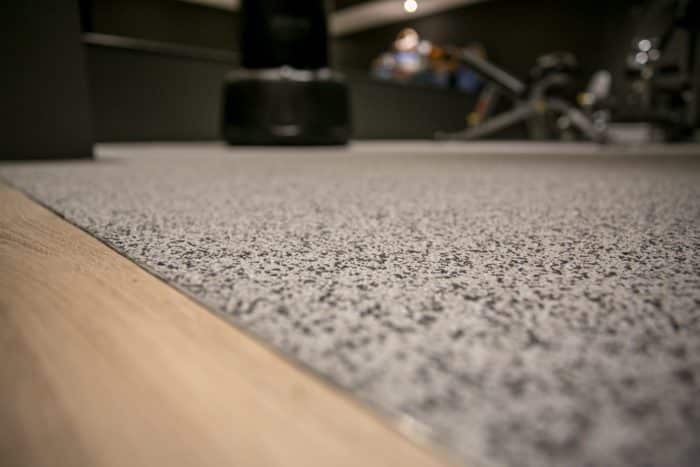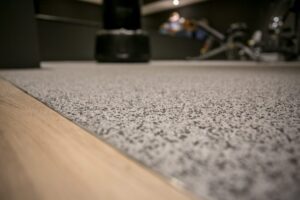The Best Poured In Place Rubber Maintenance In San Diego: 5 Steps

The Best Poured In Place Rubber Maintenance In San Diego: 5 Steps
Safety and environmental friendliness should be taken into account while choosing a surface. The highest level of security and durability is provided by wet pour flooring and surfacing. We offer one of the best wet-pour surfaces for all project kinds. Our wet pour rubber surface installation is cost-effective and guarantees durability for every area, including sports courts, playgrounds, schools, splash parks, and more.
Site Appropriacy
Wet pour surfacing materials cure quickly, so it is essential that we keep our mixing facilities as close to the site as is practicable. If the site surface is suitably hard, such as concrete, tarmac, etc., the wet pour rubber surface can be laid on top of it.
In general, it’s important to know how long the hard underlying layer will endure. Installing a wet pour rubber surface on a poor base surface will simply increase maintenance costs.
Maintenance
The limited areas must be kept clean at all times since the rubber safety flooring is permeable. It is very important to do this to make sure that water coming in may pass through the surface without clotting on the playground and jeopardising safety. The following actions should also be conducted to preserve wet pour rubber surfaces:
Upkeep Of A Spotless Surface
The wet pour rubber surface needs to be kept clean, as it was previously mentioned, to avoid rotting and the development of a layer that obstructs drainage. If the layer forms, moss, weeds, and other organisms may establish a home there. Regular cleaning by gentle power washing and scrubbing should make it simple to remove debris and other sorts of pollutants from the surface.
Getting Rid Of Stinky Stains
Using hot water (don’t use boiling water) and a cleaning solution will make stains easy to remove. Methylated spirits with a cloth can be used to remove oil stains and other similar stains. Chewing gum could likewise be disposed of using an aerosol freezer.
Snow And Ice
Wet pour rubber won’t be damaged by snow or ice, but it’s still important to continually scrape them off. The best removing instruments are rubber-edged brushes or scrapers. Metal shovels and scrapers have the potential to deform the surface. Additionally, de-icers based on solvents shouldn’t be permitted.
FAQs
When Poured Rubber Is Dried, How Long Does It Take?
It is important to keep in mind that the time it takes for poured rubber to dry will vary depending on several factors. The temperature of the room, the type of rubber being used, and the thickness of the pour are all variables that will affect drying time. If you are pouring rubber into a mold or onto a flat surface, you may be able to up the drying process with a gun. However, it is to be mindful of the temperature that you are using, as overheating rubber can cause it to weaken or become brittle. In general terms, poured rubber should take between 24-48 hours to dry completely under normal conditions. If the environment is hot and dry, the drying time will be shorter. On the other hand, if it is cold and humid, the drying time may take longer. It is also important to note that you should never leave poured rubber exposed for long periods of time as this can make the surface brittle or cause bubbles or cracks to form. Once your poured rubber has dried, you can proceed to the next step in your project.
What Level Of Heat Can Rubber Handle?
It is important to understand the safety and performance limitations of rubber when working with it in extreme conditions. Heat is one of the major environmental factors that will affect the performance and longevity of a rubber product. The rate at which heat affects rubbers depends on many variables, including temperature, type, composition and design of the product, as well as its individual characteristics. The level of heat rubber can handle is determined by its thermal stability. Heat resistance is usually described in terms of the maximum temperature that a material can withstand for a certain amount of time without significant physical or chemical changes. The degree of heat resistance will also depend on how well the product has been designed, manufactured and stored. For instance, the same rubber compound may have different heat stability depending on the type of vulcanization used. Generally speaking, most rubbers can handle temperatures between -40°F (-40°C) and 212°F (100°C). Synthetic elastomers such as silicone and neoprene have a higher temperature resistance than natural rubber, and can handle extreme temperatures up to 500°F (260°C).
What Is The Safest Playground Surface?
It is important for parents and caregivers to know that playground surfaces should be selected carefully. A number of factors must be taken into consideration before selecting a playground surface, including the age of the children using the equipment, the type of play activities taking place, as well as traffic patterns in the area. The most common playground surfaces are wood chips, sand or pea gravel, rubber mats or mulch. Each surface has its own advantages and disadvantages, which must be weighed when making the decision. Wood chips are a popular choice for many playgrounds because they provide cushioning while also being economical. They are natural, absorbent and easily replaced if needed. However, wood chips can shift and cause tripping hazards if not maintained properly.
Our products will preserve the surface in excellent shape even when youngsters play endlessly. Call Playground Safety Surfacing at (888) 902-3777 for more information about repairs and maintenance.
Conclusion
Get in touch with Playground Safety Surfacing at (888) 902-3777. We have worked hard to establish ourselves as the best supplier of playground surfaces and more.
Let's Get In Tough
How can we help you?
Our Services
Related Posts

A Comprehensive Guide to Installing Artificial Grass on Sports Fields In San Diego
A Comprehensive Guide to Installing Artificial Grass on Sports Fields In San Diego Installing artificial grass…

The Ultimate Guide to Installing Artificial Grass on Rooftops In San Diego
The Ultimate Guide to Installing Artificial Grass on Rooftops In San Diego Want to transform…


Leave a Reply